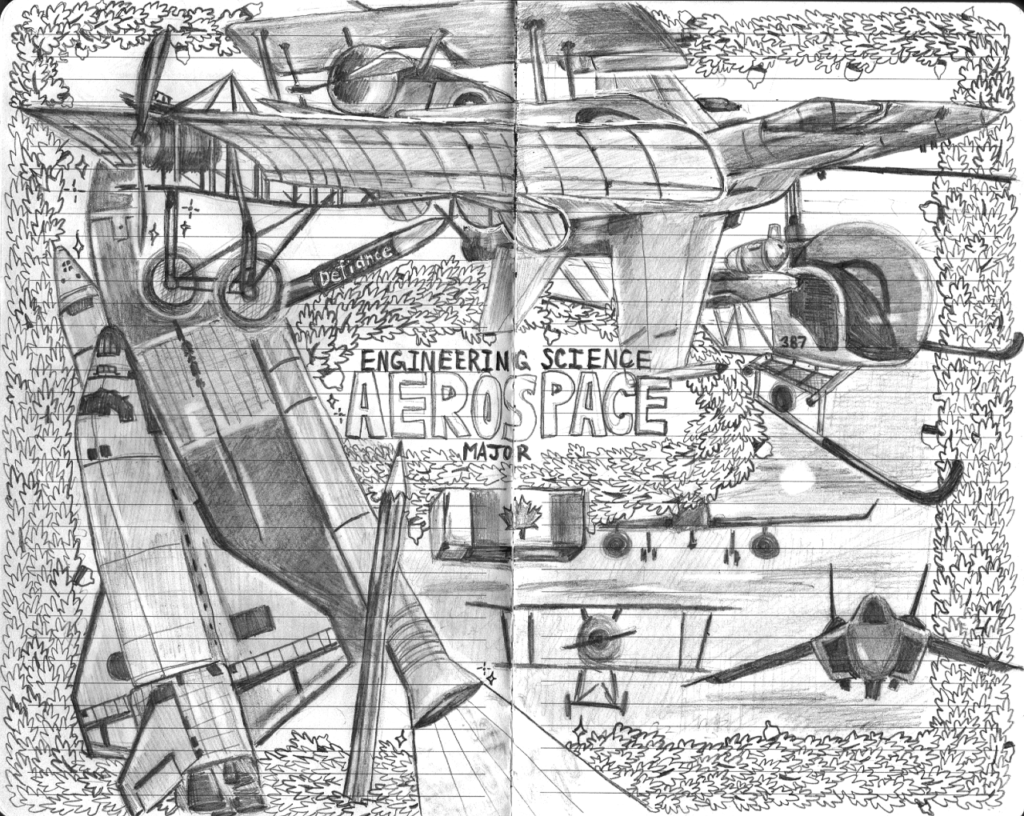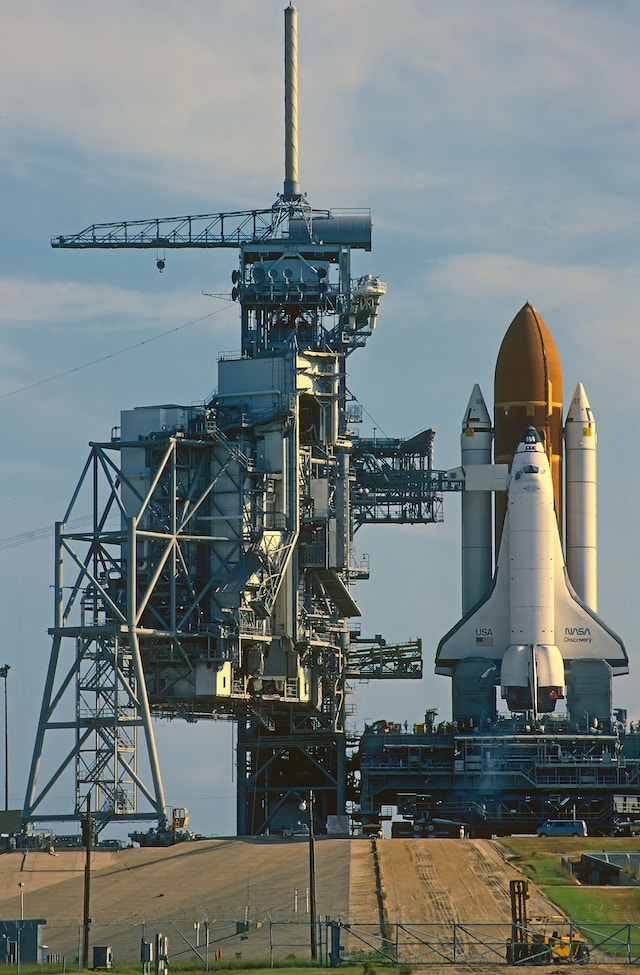Every career has something to do with aerospace engineering – it just matters how hard you throw the thing.

Aerospace Engineering Major Art by EngSci 2T6 Leah Bel Ben-Tzur (instagram: @leah.bentzur)
What is Aerospace Engineering?
Aerospace engineering has to do with the design, development, testing, and production of aircraft, spacecraft, missiles, rocket-propulsion systems, and other equipment operating within or beyond earth’s atmosphere. In this way, the field relates to robotics, computer engineering, material sciences, energy systems and more!
The aerospace field includes exciting work such as research in super light materials, experimental energy sources and low-cost space travel.
Why Choose Aerospace (aka Aero)?
- You want to be the next Chris Hadfield, the first Canadian to walk in space, or Kristen Facciol, an EngSci Aerospace graduate who is a robotics flight controller for the ISS!
- You want to start the next Kepler Communications! The company was founded by three EngScis and specializes in making satellites.
- You want your invention on a dollar bill, like the Canadarm once was.
- Rockets and airplanes! You’ll be a rocket scientist (legitimately – which is very cool 👍).

Photo by Terence Burke on Unsplash
- You’ll be among a select few with an undergraduate degree in Aerospace Engineering.
- You have dreams of working for space agencies, such as CSA (Canadian Space Agency) or NASA, or private companies such as MDA, Bombardier, Boeing or JPL.
- You will enter a technologically advanced and challenging field, where you will be responsible for advancing human exploration and transportation on earth and beyond.
- You are interested in aerospace research. The University of Toronto Institute for Aerospace Studies (UTIAS) is home to aerospace graduate studies. UTIAS also works with the Division of Engineering Science on the Aerospace Engineering major (many of your professors will be UTIAS faculty).
- You want to work with a unique mix of mechanical engineering, energy systems, materials science and even robotics!
Courses in Year 1 & 2 that relate to Aero:
Year 1
CIV102 – Structures and Materials
Many concepts in typical structural engineering match concepts in aerospace engineering. For example, loading a bridge is kind of like keeping a plane wing straight; vibrations in buildings are very similar to airplane turbulence.
PHY180 – Classical Mechanics
Movement of objects through space, the basics of energy, friction: this course covers it all!
MAT185 – Linear Algebra
This is a pure math course you’ll take in the Winter Term. You will use principles taught in this course for your future third and/or fourth year courses, such as solving or approximating systems of equations.
Year 2
This course is split into two halves: thermodynamics and heat transfer. You’ll need thermodynamics for building engines and dealing with gases. During the heat transfer portion, you’ll learn about how heat moves through materials. A common problem in aircraft design is keeping your materials hot or cold enough when moving through the cold atmosphere at high speeds, so pay attention if you’re going into Aero!
This course gives you a solid foundation in modeling different physical systems mathematically. Heat-related systems in plane engines can be modeled with ODEs (Ordinary Differential Equations), for example.
This is another two-part course. The first half focuses on vector calculus, which involves differentiation and integration in vector fields in 3D space. You will use some of this in the fluid mechanics half of the course, which introduces ways to analyze and predict the motion of fluids in different situations. The motion of a plane flying through the air can be modeled as an object moving through a fluid, so the principles from fluid dynamics are invaluable!
Interesting Courses in This Major
AER302 – Aircraft Flight
This course aims to teach you the basics of aircraft performance with an introduction to static stability and control. From the course description: “Topics covered include: Equations of Motion; Characteristics of the Atmosphere; Airspeed Measurement; Drag (induced drag, total airplane drag); Thrust and Power (piston engine characteristics, gas turbine performance); Climb (range payload); Turns; Pull-up; Takeoff; Landing (airborne distance, ground roll); Flight envelope (maneuvering envelope, gust load factors); Longitudinal and lateral static stability and control; Introduction to dynamic stability.”
This course is centered around the design, construction and flight of a remotely piloted aircraft. Students build an aircraft that maximizes metrics like take-off distance, payload volume and weight, and flight speed. The course culminates in a “fly-off” where students compete in multiple flights with their RC aircraft!
This course broadly covers spacecraft design and control systems, as well as flight predictions, considerations, calculations and trajectories.
Where to Get Some Experience Before Deciding?
University of Toronto Aerospace Team (UTAT)
UTAT is an award-winning design team of undergraduate and graduate students working on amazing design projects. UTAT has several divisions that you can join: Rocketry, Aerial Robotics, UAV (Unmanned Aerial Vehicle), Space Systems, Outreach, and Aerospace Policy.
Robotics in Space Exploration (RSX)
RSX designs, builds, and tests robots for planetary exploration. They compete in space engineering competitions around the world, notably the International University Rover Challenge (URC) in Utah and the CanSat competition in Texas.
SEEK (Space Exploration and Engineering Kompetition) is an annual competition organized by RSX where students gain practical experience with space technologies.
Visit the Skule Clubs and Design Teams pages to find more extracurriculars.
Check out the EngSci majors website here for more info:
